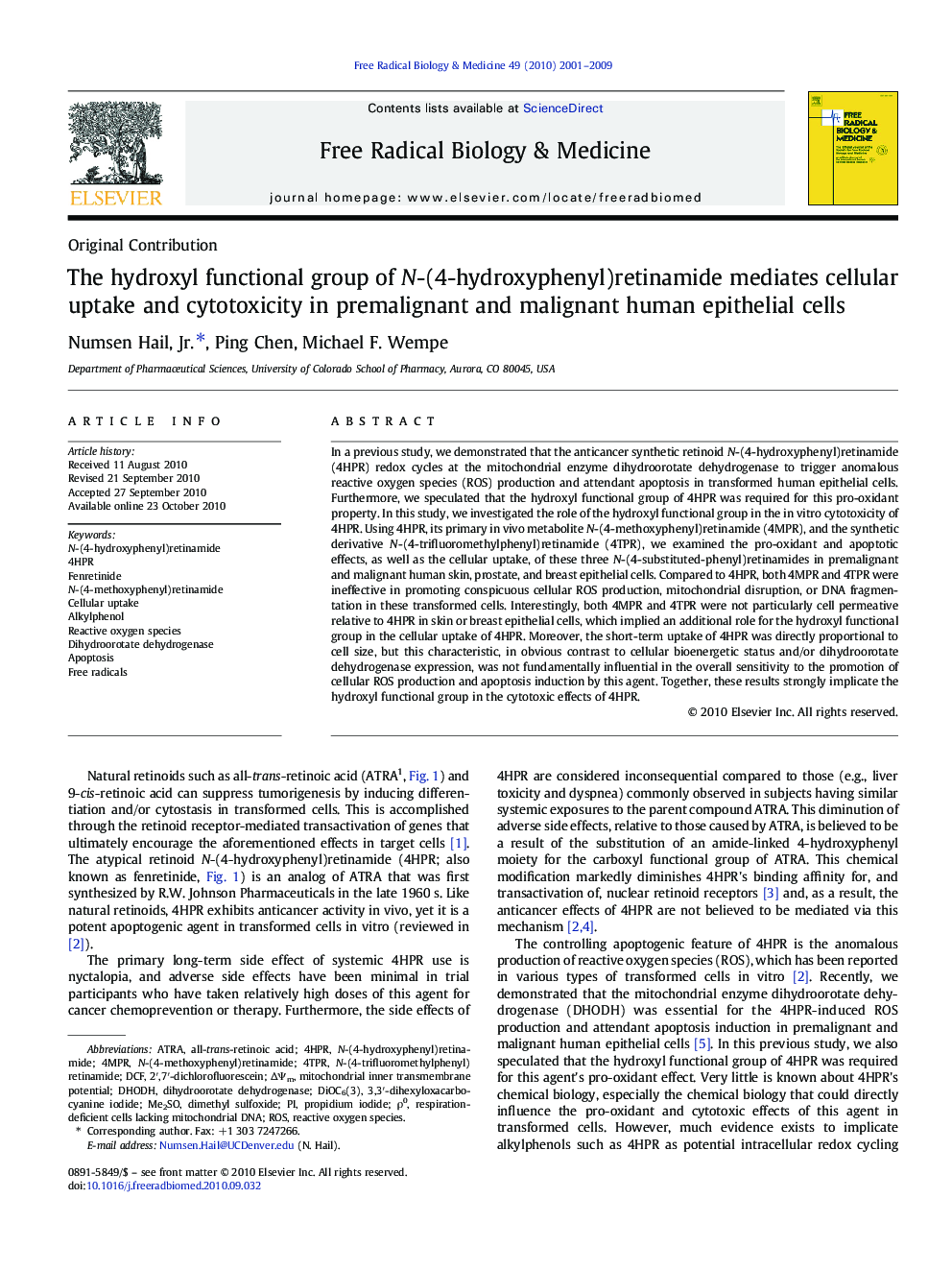| کد مقاله | کد نشریه | سال انتشار | مقاله انگلیسی | نسخه تمام متن |
|---|---|---|---|---|
| 1909763 | 1046739 | 2009 | 9 صفحه PDF | دانلود رایگان |

In a previous study, we demonstrated that the anticancer synthetic retinoid N-(4-hydroxyphenyl)retinamide (4HPR) redox cycles at the mitochondrial enzyme dihydroorotate dehydrogenase to trigger anomalous reactive oxygen species (ROS) production and attendant apoptosis in transformed human epithelial cells. Furthermore, we speculated that the hydroxyl functional group of 4HPR was required for this pro-oxidant property. In this study, we investigated the role of the hydroxyl functional group in the in vitro cytotoxicity of 4HPR. Using 4HPR, its primary in vivo metabolite N-(4-methoxyphenyl)retinamide (4MPR), and the synthetic derivative N-(4-trifluoromethylphenyl)retinamide (4TPR), we examined the pro-oxidant and apoptotic effects, as well as the cellular uptake, of these three N-(4-substituted-phenyl)retinamides in premalignant and malignant human skin, prostate, and breast epithelial cells. Compared to 4HPR, both 4MPR and 4TPR were ineffective in promoting conspicuous cellular ROS production, mitochondrial disruption, or DNA fragmentation in these transformed cells. Interestingly, both 4MPR and 4TPR were not particularly cell permeative relative to 4HPR in skin or breast epithelial cells, which implied an additional role for the hydroxyl functional group in the cellular uptake of 4HPR. Moreover, the short-term uptake of 4HPR was directly proportional to cell size, but this characteristic, in obvious contrast to cellular bioenergetic status and/or dihydroorotate dehydrogenase expression, was not fundamentally influential in the overall sensitivity to the promotion of cellular ROS production and apoptosis induction by this agent. Together, these results strongly implicate the hydroxyl functional group in the cytotoxic effects of 4HPR.
Journal: Free Radical Biology and Medicine - Volume 49, Issue 12, 15 December 2010, Pages 2001–2009